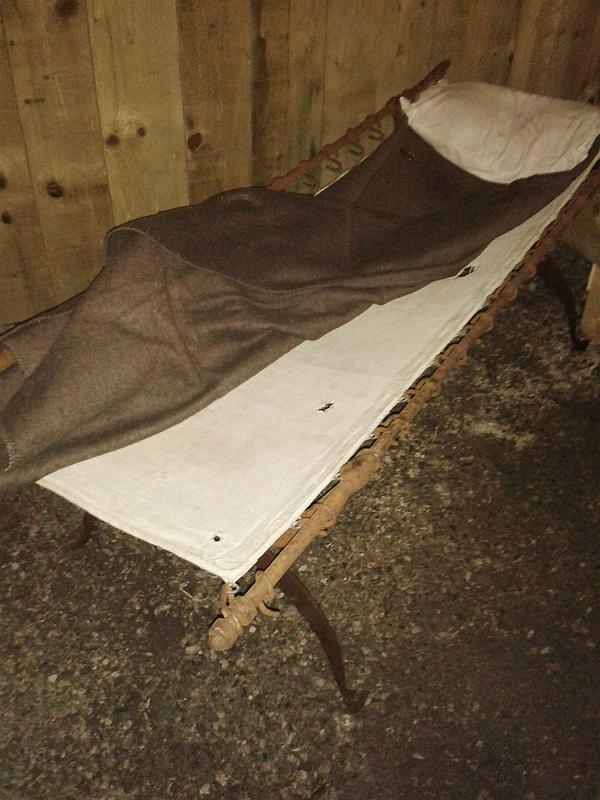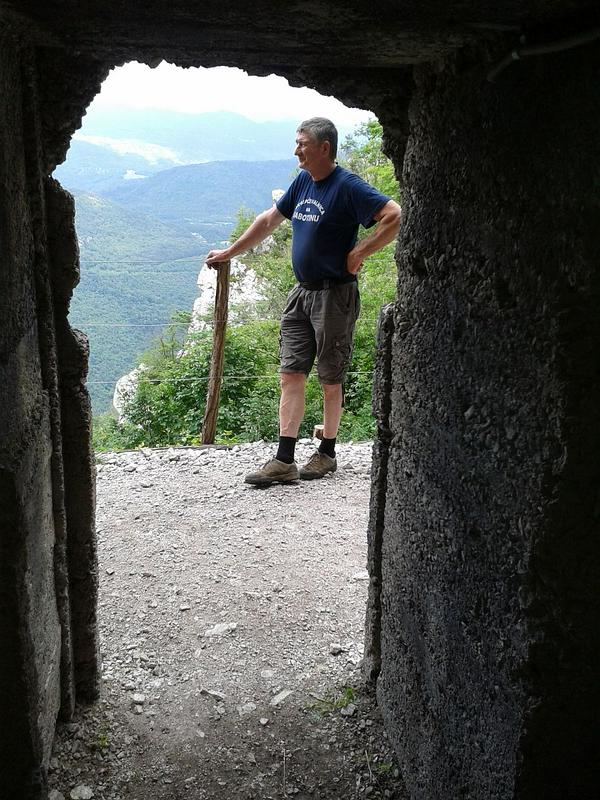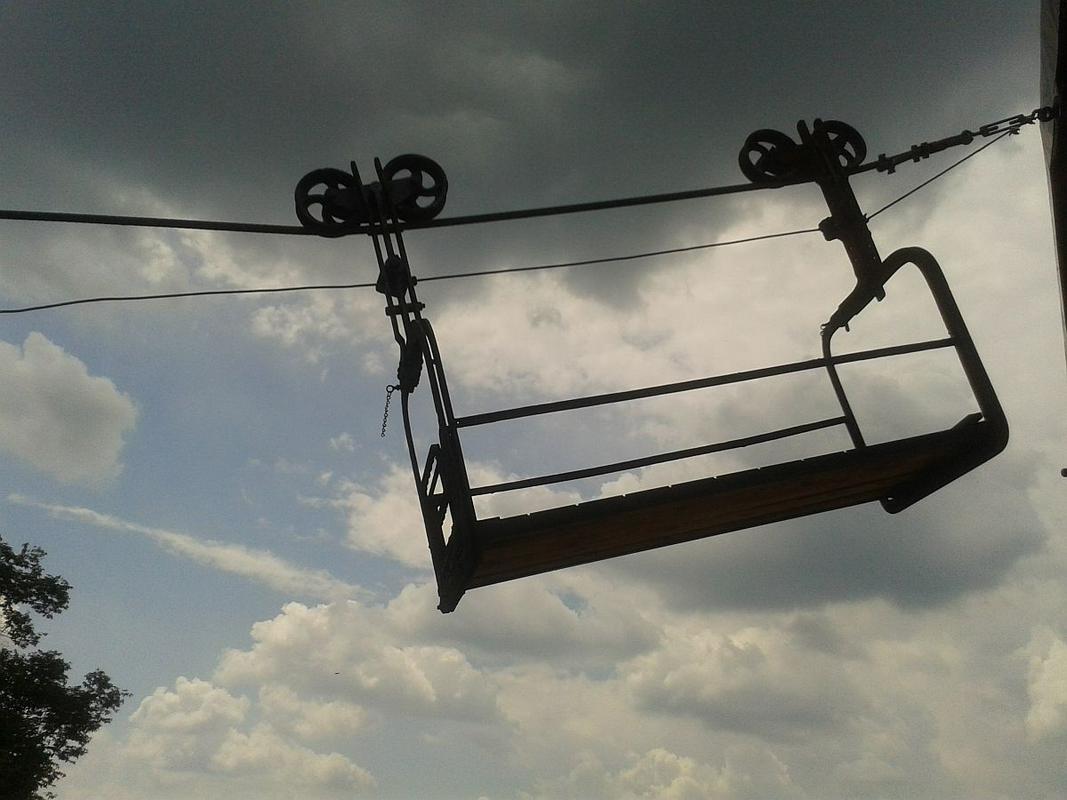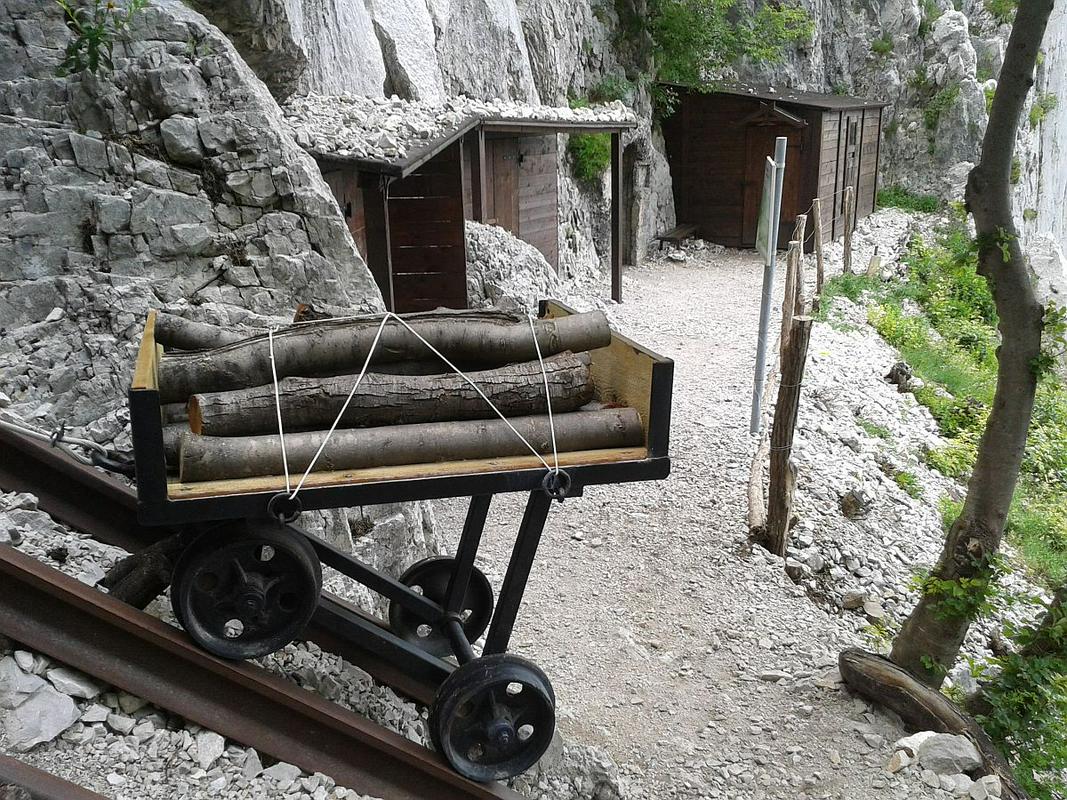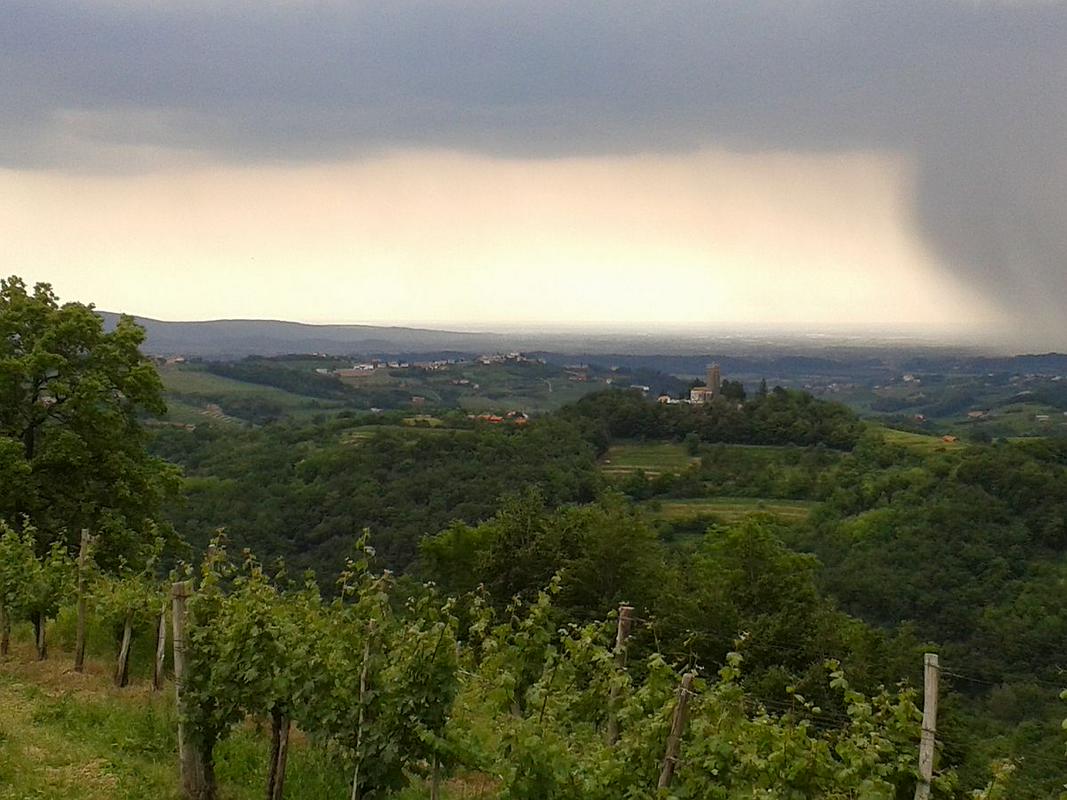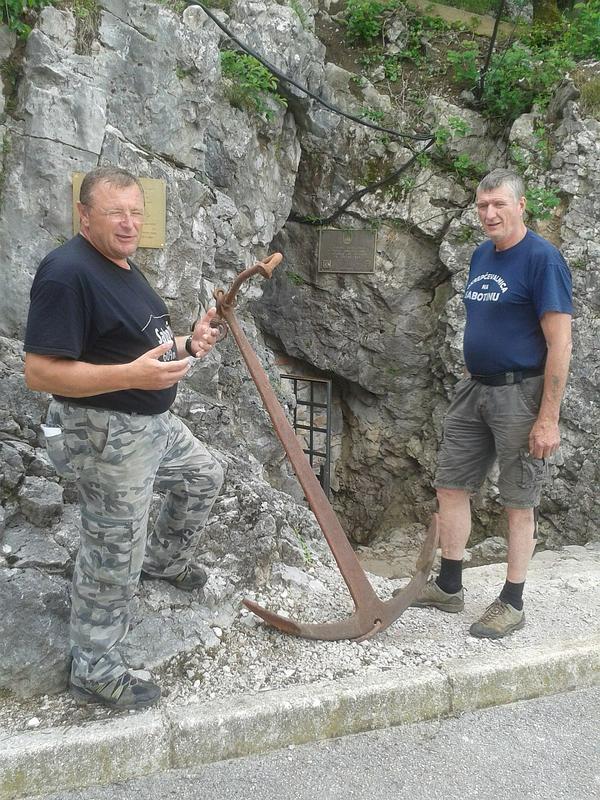
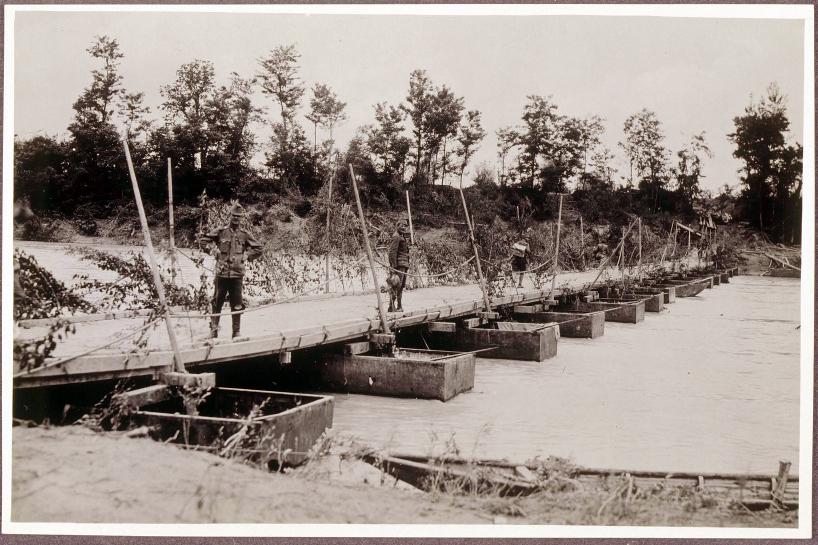
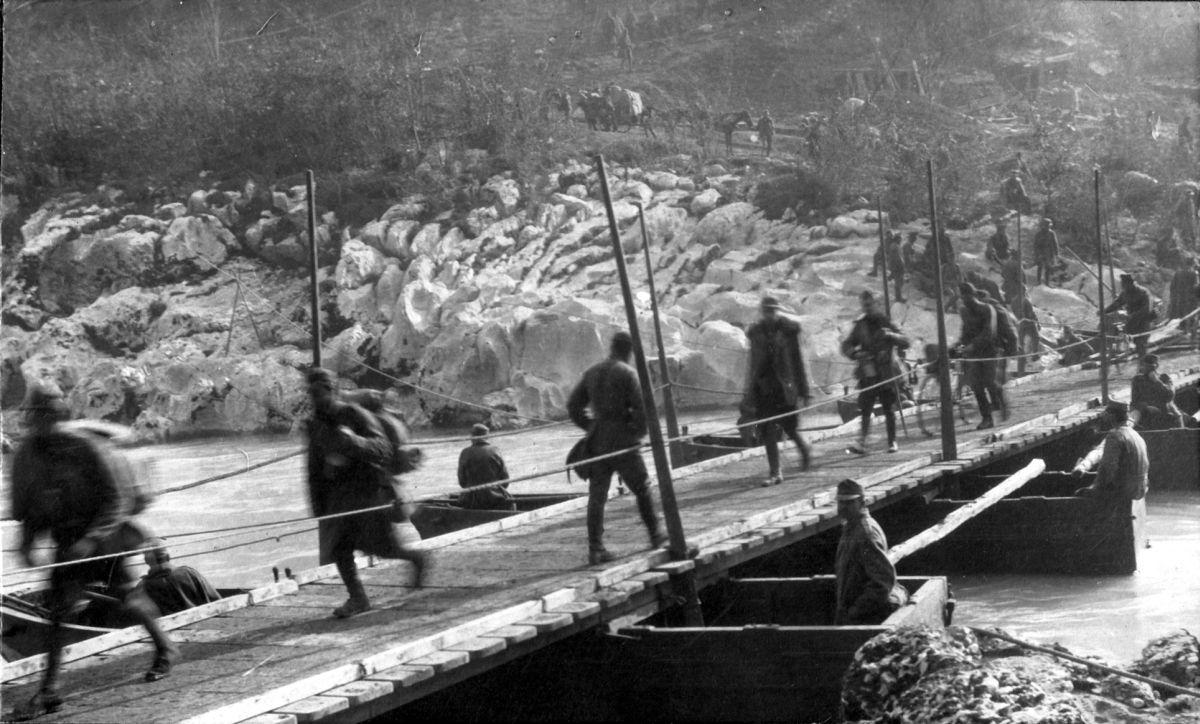

Such huge anchors were used during WW I for anchoring pontoon bridges for crossing rivers at breakthroughs. The anchor was raised from the river bottom and transported to the top of Sabotin, to the Sabotin Peace Park, where it will be cleaned and exhibited as a part of the collection of the First World War Outdoor Museum.
Bogdan Potokar, the caretaker of the Sabotin Peace Park, and the author of an interesting collection of the remains and photographs from the first World War, exhibited in the refreshment bar at the top of Sabotin, was truly happy with the find: »We intend to clean the huge anchor, and exhibit it in the Peace Park. We will try to get a boat which was used to support the pontoon bridges in the first World War, and thus illustrate the mooring of these boats which allowed the soldiers to cross the river. The anchor we have here weighs approximately 100 kilograms, which was enough to anchor one boat within the pontoon bridge system. The members of the The Soča Front Society (Društvo Soška fronta) have procured the photographs of pontoon bridges across the Soča river, so that we will be able to prepare a reliable illustration of pontoon bridge mooring. For now we intend to display it on the mountain above the Soča river, where we already have the First World War Outdoor Museum. Later we will perhaps move it to the very place where a century ago pontoon bridges were actually moored, on the Soča river.«
The top of the mountain is riddled with caverns and bunkers
Sabotin, steeply rising above the Soča river, is a silent witness to the bloody history from a century ago. During the first World War members of 22 nations fought on its slopes, either for the Italian or for the Austro-Hungarian army. The knowledge Bogdan Potokar, who has been taking care of the Peace Park, has about this mountain, is in fact encyclopaedic: " Sabotin alone hides more than 15 kilometres of caverns. Caverns are underground caves housing even a hundred people at once. They carved them into bedrock in nine floors! We offer our visitors guided tours to present to them the system of the caverns, which allows passing from one side of the hill to the other."
Caverns, bunkers and trenches had been dug by soldiers of the Italian and the Austro-Hungarian army, who had, during 1915 and 1917, fought the twelve battles of the Isonzo Front (Soška fronta) in this area. Due to its strategically extremely important position above Gorica, the Austro-Hungarian military strategy had considered Sabotin an important defensive point. They had started fortifying their positions on Sabotin already in 1915, even before the armed conflicts started. They had constructed a steep funicular to transport food and ammunition from the Soča valley; the funicular has been partly reconstructed and it is displayed at the First World War Outdoor Museum on the top of Sabotin.
The Austro-Hungarian soldiers defended Sabotin until the sixth battle of Isonzo in August 1916, when the Italians conquered the mountain. The Austro-Hungarian units retreated to the east bank of the Soča river. The Italians rearranged the caverns for their needs, and installed in them mortars which they used to bombard the Austro-Hungarian positions at Kuk, Sveta gora, Vodice and Škabrijel.
The cruel fate of the soldiers on Sabotin
Some of the caverns at the top of Sabotin were arranged as they were a century ago. The visitors can imagine the life of the soldiers in the stuffy, damp subterranean caves. They slept on narrow bunk beds, covered with straw – ten and even more in a single cave. Bogdan Potokar told us about the horrors of that time: »When not on the battlefield, boys and men hid in these holes. The humidity reached 80 percent. They developed lung infections. The wounds did not heal. They were attacked by rat packs. An enormous number of soldiers died in the caverns – not only from shot wounds, but as a consequence of the insufferable conditions within the mountain.«
The life of the officers, on the other hand, was quite luxurious, in spite of the general shortage. One of the caverns for the officers has been arranged as it used to be a century ago. In it you can see a bed used by officers, a couple of bunk beds, a table, some chairs, a light, military symbols – every piece an original from that horrible time of the first World War. Let us mention the interesting fact that the entire system of caverns at Sabotin already had electrical lighting at that time, and that they even had the system of water distribution, with rainwater from one of the caves as the source. Next to the officer's cavern there was even a bathing tub – also reconstructed and exhibited in the Peace Park at Sabotin.
The mountain full of symbolism
Sabotin, the mountain whose name in history is written in blood, is also a mountain full of symbolism. The ridge is the frontier between Slovenia and Italy, which was completely closed immediately after the second World War, but it was finally surmounted when Slovenia joined the European Union. Within the project Peace Park a museum collection Sabotin in the First World War can be seen, along with the memorial room Northern Primorska in the War of Independence 1991, both in the premises of the former frontier guardhouse which is now being used as a refreshment bar.
Mojca Dumančič, TV Slovenija
Translated by G. K.






















































